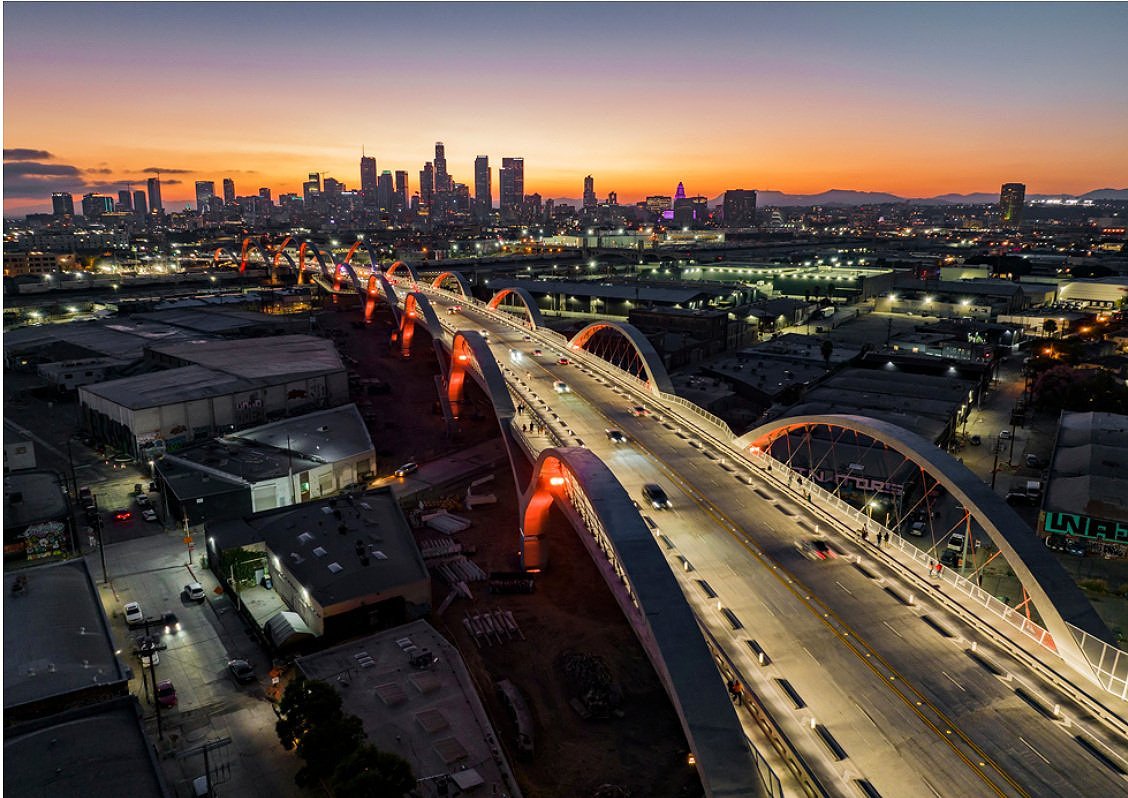
Sixth Street Viaduct
Los Angeles, CA
The original Sixth Street Viaduct (inset) was recognized by millions of people as the background of movie drag races (Grease), high speed car chases and TV ads, but almost no one knew its name. They did know it was in Los Angeles. When this memorable bridge needed replacement the city decided to create an equally memorable new bridge by means of an international design competition. The result was a series of 10 pairs ofconcrete arches that pays homage in to the old bridge while laying a new and lively blocks-long “Ribbon of Light” across the downtown skyline.

The bridge spans the Los Angeles River, the 101 Freeway, local surface streets and 18 railroad tracks operated by five different railroad agencies including Union Pacific and Metrolink.

The arches are continuously lighted, and the lighting can be programed to change color. Drivers, bikers and pedestrians experience a memorable procession at night.
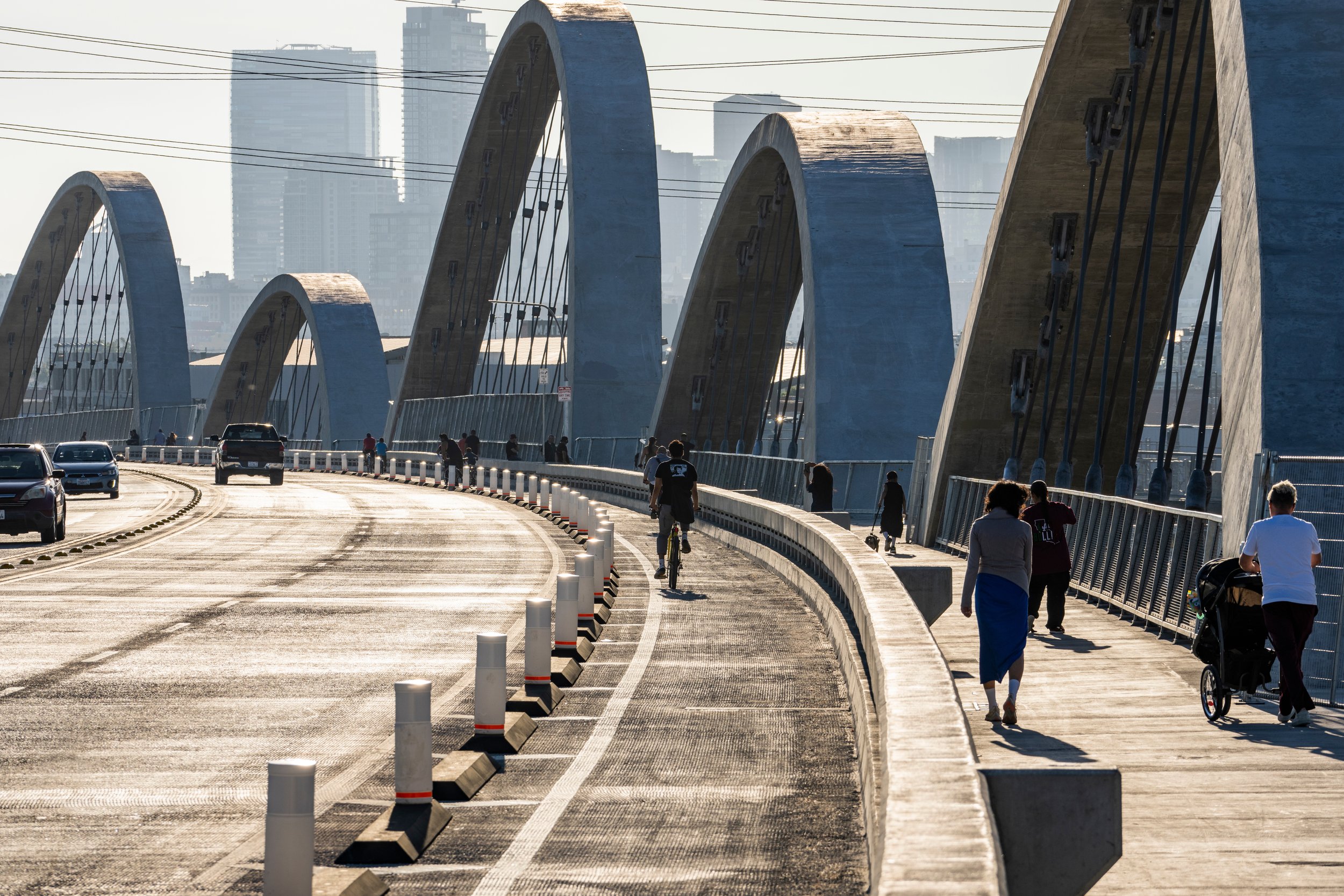
The arches have no overhead bracing and lean back from the edge of the roadway at a 9 degree angle, directing the user’s view to the Los Angeles sky.

The 10 arch spans vary in length, but the span-to-rise ratio is kept the same. The arches vary in height, but their proportions are consistent. The viaduct’s arches are all of the same family. The arches themselves and their gull-wing Y-supports are pure concrete shapes generated by the fundamental geometry of the bridge. There is no additional embellishment, and none is required.

Wide sidewalks and bikeways safely separated from vehicular traffic make the convenience of the new viaduct equally available to pedestrians and bicyclists.
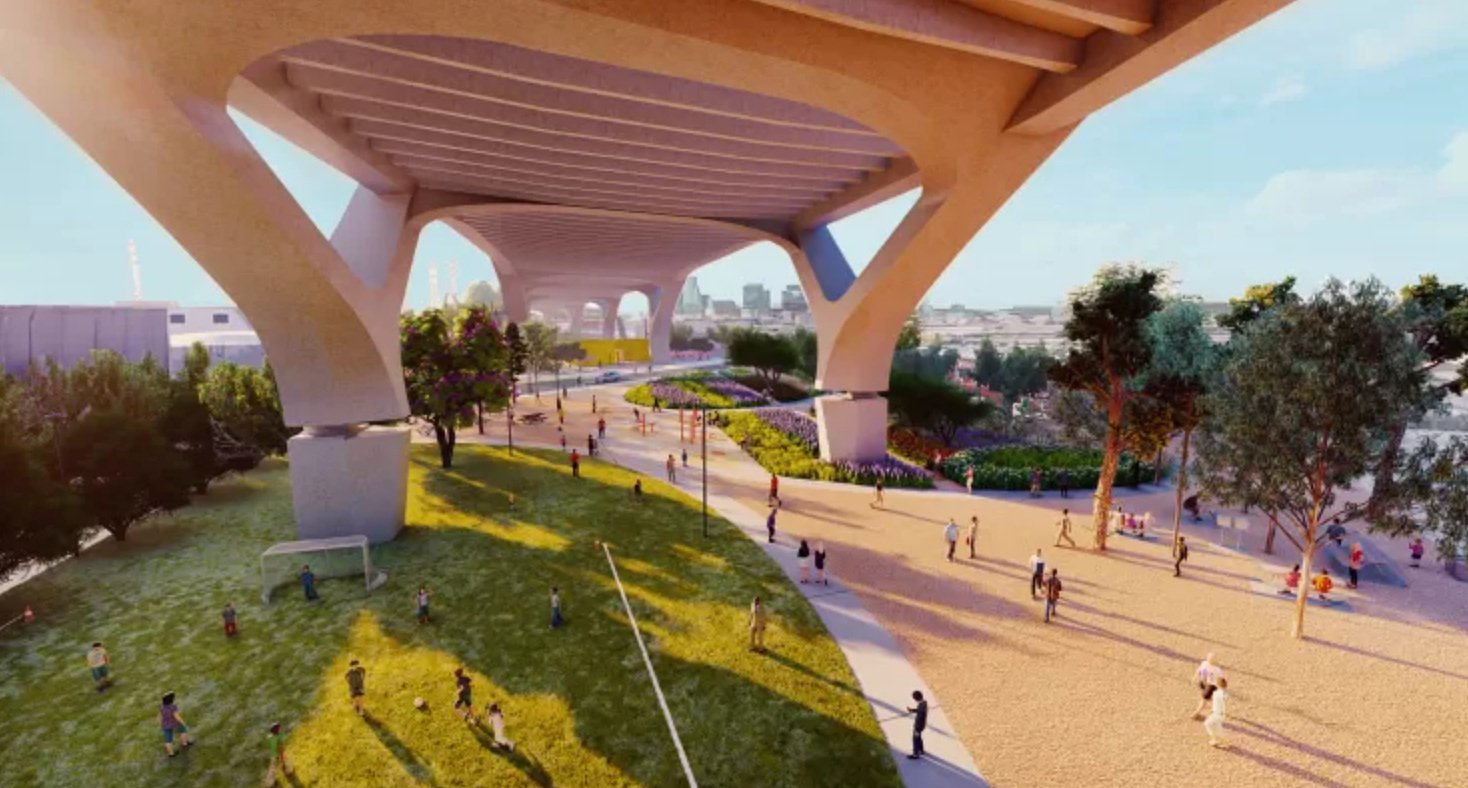
The swath of land below the viaduct will become a 13-acre park with sports facilities including a running path and skateboarding. The west section of the park will include a performance lawn, dog park areas, a fitness circuit, and even a café. The new park engages with the newly reconstituted Los Angeles River, provides new opportunities for connection, and dissolves the dividing line between Los Angeles’ downtown and East side. What’s underneath the bridge will be equally important as what’s on top.
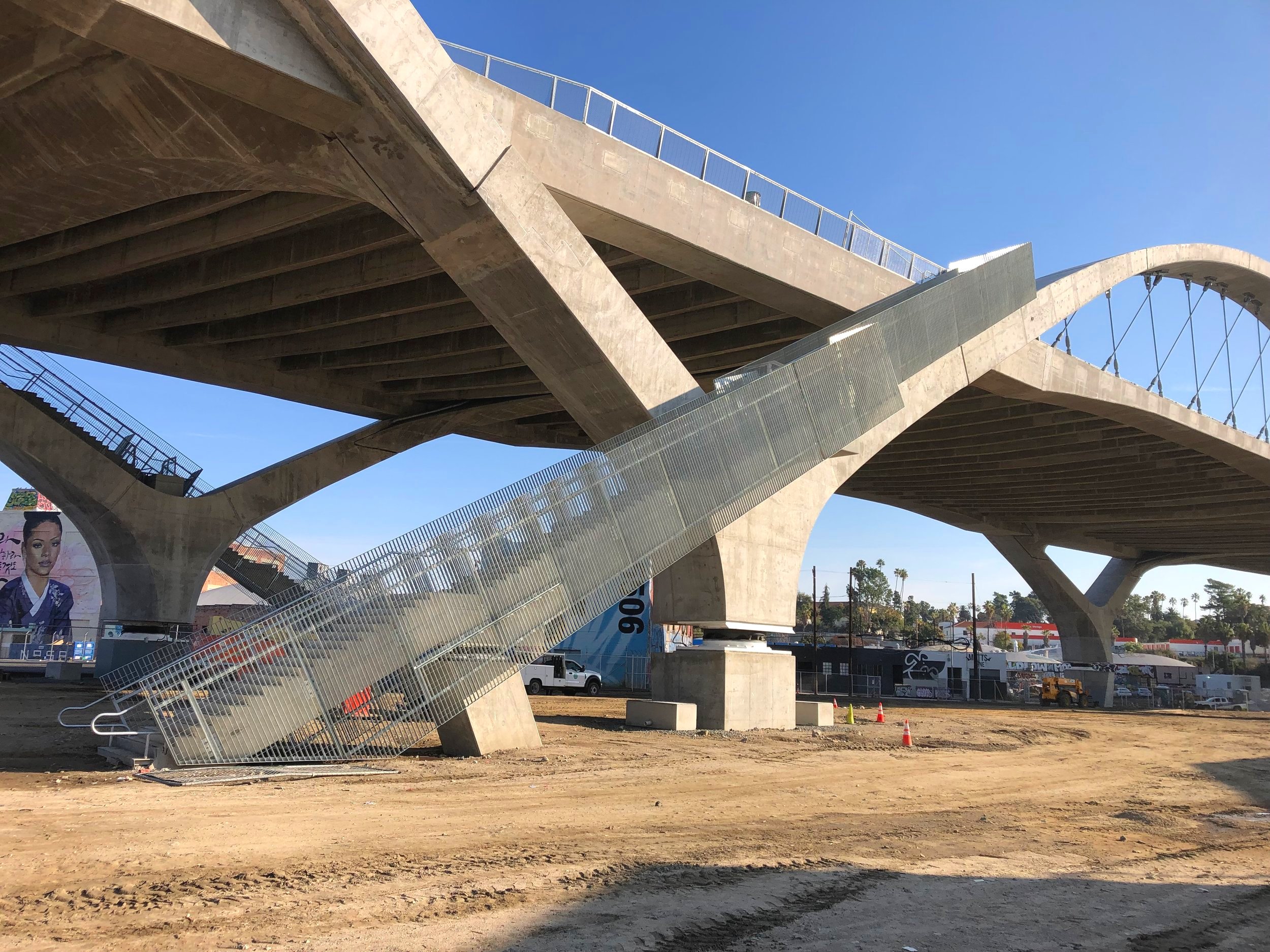
Periodic staircases and ramps tie together what’s underneath with what’s on top. These elements of vertical circulation are clearly differentiated from the bridge itself by material and shape.
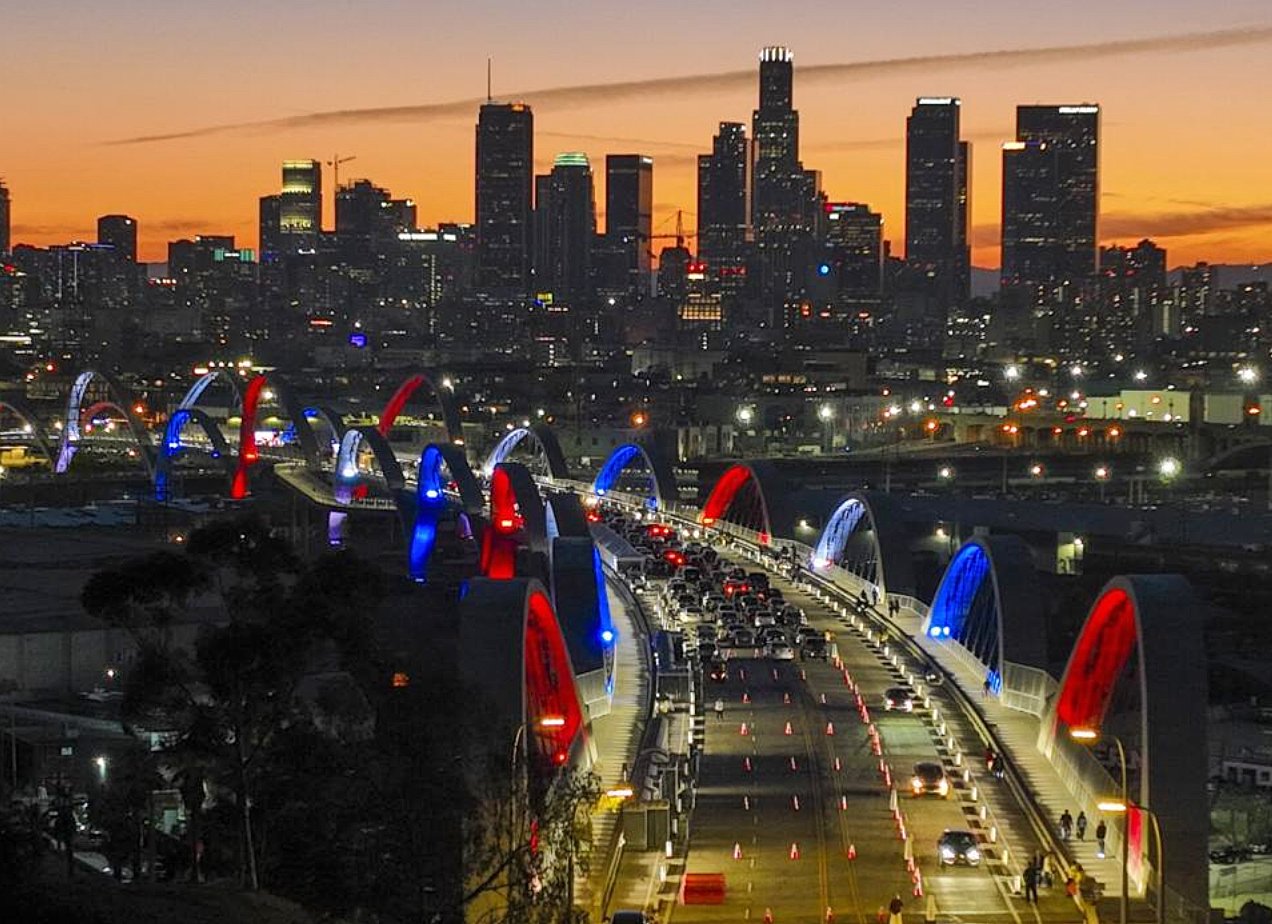
“. Our new bridge will not only bring people from Point A to Point B, but to Point C – the bridge itself. It will be a shining-star destination spot worthy of the City of Angels.””
